One Year Later: Haiti Will Not Die
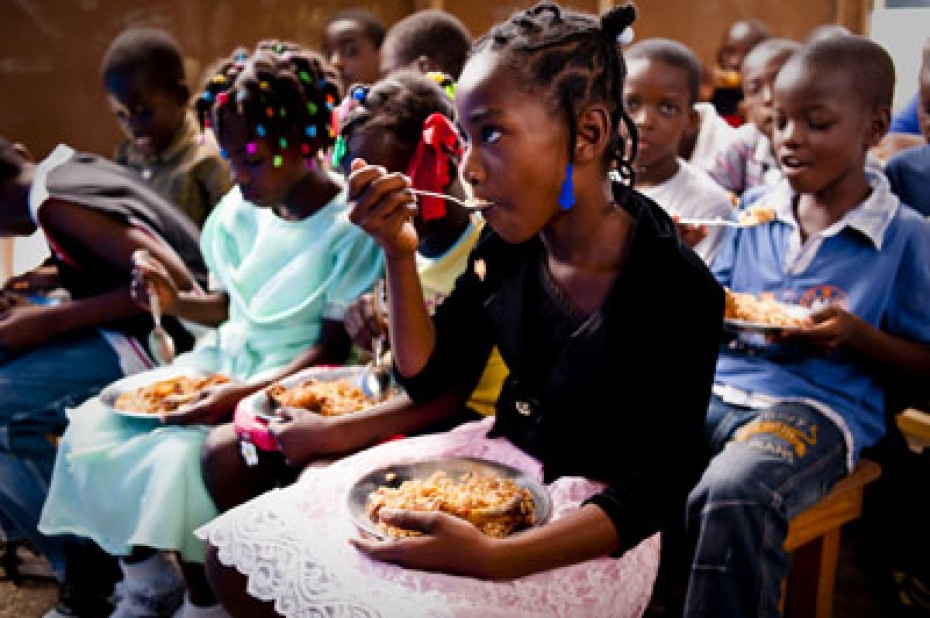
The work is still large. It won’t happen overnight or even in a year. It will take years for Haiti to come back from this earthquake. But Elissaint isn’t leaving. Compassion Haiti isn’t leaving. And the local churches who implement our programs aren’t leaving. They are raising a generation of children to believe that their life doesn’t have to end with poverty.
Continue Reading ›Hope for Haiti: The One-Year Anniversary
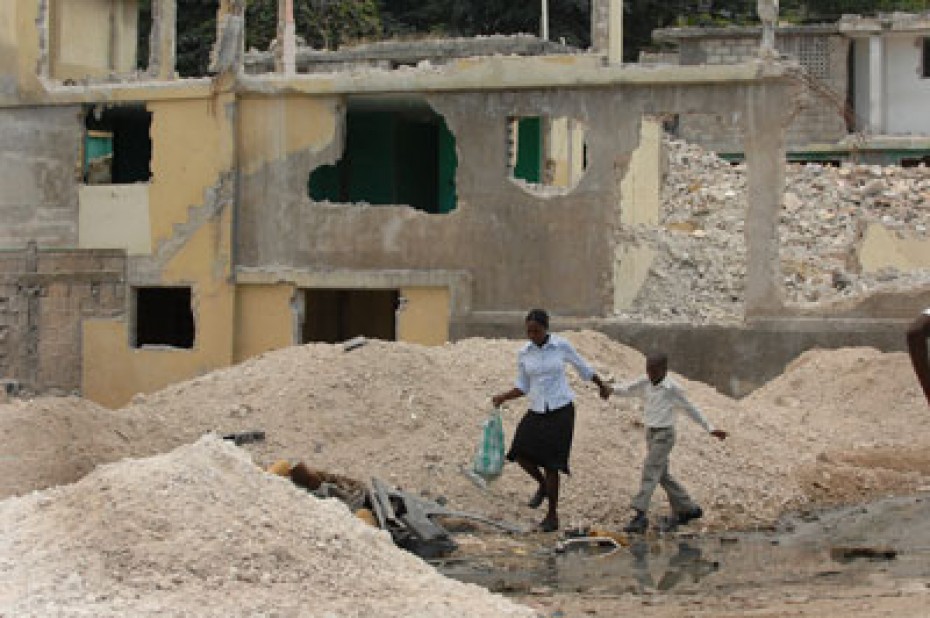
This has been a tragic year for Haiti on many fronts. In a matter of months after January’s earthquake, Haiti endured a hurricane which threatened those already homeless and displaced, a cholera outbreak has taken the lives of thousands more, and recent elections were so filled with corruption that rioting and violence followed them.
Continue Reading ›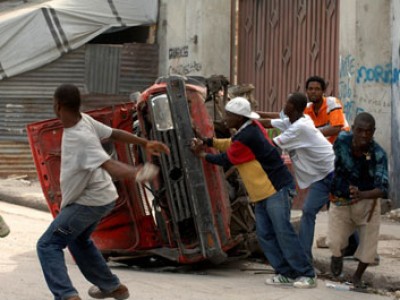
Haiti in Realtime: What Defines ‘Non-Violent’?
The streets are still filled with debris, smoldering tires and overturned cars. Few cars can pass, so transportation is limited to motorcycles and feet. There are still pockets of violence throughout the city, but it’s so much quieter today. Quiet enough for me to think. Which can sometimes be dangerous.
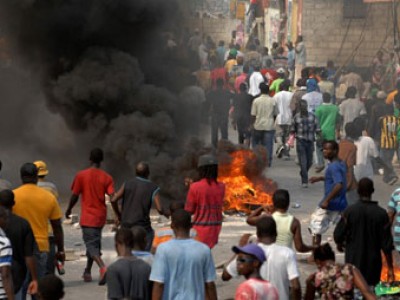
Grace in the Chaos: A Report from Haiti
I thought I was imagining it at first. I do have an overactive imagination, after all. But I couldn’t mistake the chanting. I crept to the window, and as icy cold water from the air conditioner dripped on my feet, I heard the city exploding. Nothing had blown over. It had blown up. I lay back in my bed. The voices outside grew louder, then quieter. I willed them to fade away. They didn’t.
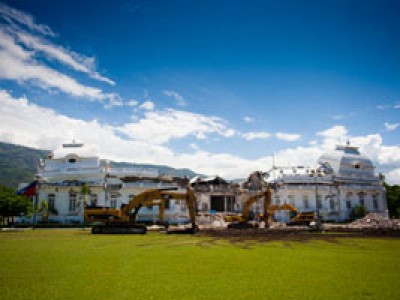
Redeeming Haiti
No one in their right mind would call the earthquake that hit Haiti a good thing. It was utterly devastating. And yet still there is good.
Because of the earthquake’s destruction, Haiti is now having to start with what feels like a nearly clean slate. The [corrupt and inefficient] government was toppled. The [inadequate] school system was destroyed. Proof of [unjust] land ownership is now virtually impossible. The [enormous and unbridgeable] gap in economic status was decimated, putting government officials in tents next to poor slum-dwellers.
Life in Haiti After the Earthquake: A Changed Perspective
Received from Ken Laura, a member of our Haiti Relief Team working in Port-au-Prince.
Sunday, April 25 — I moved last week and it has changed my situation and my perspective. Instead of sleeping in a tent beside the main road of Delmas listening to trucks roar up and down the street all night, I go to sleep seeing stars, and awaken to bird calls. Some of the birds are roosters, which start crowing at about 4:30, but other than that it is amazingly quiet here.
Whenever the power is out, usually from the morning until 10 p.m. there are very few lights in the area. Although the houses are a million dollars in size, they are only about $100,000 complete.
People do have mortgages here, but many build with the cash that they save from year to year and pay as they go. They don’t owe the bank interest, but they also have to wait a really long time to move into the house.
My new home is at the top of a steep hill in a very nice subdivision with a guard and pavement, mostly maintained. Some friends I’ve met are letting me stay as a courtesy.
Life in Haiti After the Earthquake: Weary but Resilient
This was written earlier in the week by Ken Laura, a member of our Haiti Relief Team. He has been in Port-au-Prince working with our Haitian staff since shortly after the earthquake.
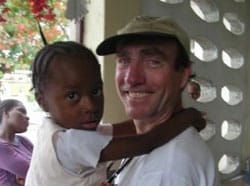 Five-thirty comes early most days, but especially on a Sunday morning when you hope to get some extra sleep before church. Not this week, however. I was wide awake at 5. I forced myself to stay in the sack for another 30 minutes despite the rooster’s consistent crowing.
Five-thirty comes early most days, but especially on a Sunday morning when you hope to get some extra sleep before church. Not this week, however. I was wide awake at 5. I forced myself to stay in the sack for another 30 minutes despite the rooster’s consistent crowing.
The high-pitched chirp of some baby doves asking for food and the soft cooing of their parents as they brought another tasty morsel to them brought back memories of 30 years ago when I was living in Limbe’ at the hospital where I worked. One of the other missionaries at that time was raising a pair of turtle doves for the eggs.
Calling my tent a sack is an exaggeration of for what I’ve been sleeping in the last three months. My tent living is nothing like what the vast majority of Port-au-Prince residents are living in at the moment.
As you’ve no doubt seen on the news, tent cities are all over town. More than 300 camps are registered in the city and more than 19 of them have 5,000-plus people living in them. The families are crammed together in muddy lots with only a sheet between them and the next family. Privacy is not a word in their vocabulary right now.
The Children’s Mite
Children are the most ignored and vulnerable group in Bangladesh, and the children we serve there are some of the poorest in the world.
But these children, who live in circumstances we can’t imagine, are learning to see hope in their lives and how to help others.
When they heard about the Jan. 12 earthquake in Haiti and that Compassion-assisted children were affected, it broke their hearts. Every day they were at the development center, they prayed. But they went beyond that as well.
Our Transitional Shelter Solution for Haiti
The rainy season is starting soon in Haiti. This period generally lasts from March to May, and then hurricane season runs from June to November. Most of the people who live in the streets and in tent cities as a result of the earthquake will be exposed to the heavy rains.
We don’t have accurate information on how many of those living outside are in shelters that can withstand the rainy season, but it’s clear that a large number of them don’t have rainproof materials. The materials most commonly used now for shelter are bedsheets. These provide a bit of privacy as well as protection from the sun, cold and dust, but not from rain and wind.
We are focusing our efforts on addressing temporary and transitional shelter needs by providing tarps as well as materials for transitional shelters. We will not be able to assist everyone in need. We will focus on those who are most in need and who have not received shelter assistance from other organizations.
Help Us Rescue Babies in Haiti
Four million babies die each year in the first month of life. Half of these babies die in the first 24 hours of life. And in the aftermath of last month’s earthquake in Haiti, the risks for babies and toddlers throughout the country have increased.
As the government focuses on the immediate and critical needs facing the country, please help us help Haiti. Help us rescue babies and toddlers from these startling infant mortality statistics, statistics that don’t care about the recent crisis in Port-au-Prince … because they are a crisis of their own.
Help us rescue babies and toddlers by supporting a Child Survival Program in Vertieres, L’Estere, Cap-Haitien or Fauche.*
Your support of $20 a month provides vulnerable babies and toddlers:
- nutritious food and supplements
- immunizations
- ongoing health care
- physical, emotional, and spiritual development
And it provides mothers and caregivers:
- prenatal and ongoing health care
- nutritional training
- parenting-skills training
- the loving embrace of a local church
As always, our local church partners carry out our ministry, and in the case of the Child Survival Program, they contextualize the program to each situation individually.
Our church partners provide the critical interventions and build the open and trusting relationships with the mothers and caregivers that are critical to our success. Survival Specialists from the churches visit homes and educate mothers in their own environment. There, the actual needs of the baby, mother, family and community are known, seen and met accordingly.
Support a Child Survival Program in Haiti.
A Time Such as This
I hit a point several weeks ago where I didn’t think I could handle seeing one more thing or reading one more article about Haiti. I needed some distance and recuperating time, which is a good thing. But despite the time of stress and trauma, there is one thing we must keep doing:
“And pray in the Spirit on all occasions with all kinds of prayers and requests. With this in mind, be alert and always keep on praying for all the saints.” – Ephesians 6:18, (NIV)
Imagine this.
You’re at work and you run into a coworker. You ask them how they’re doing. Their aunt has just passed away, and they’re having a hard time dealing with it.
Then you’re sitting in a meeting at work. You look around and realize that every single person in the room has had a loved one die in the past month. One a cousin. One a pastor. One a father.
Now imagine that you haven’t slept in your own bed for one month. 30 full days.
You’re not sure your home is safe, so you, your spouse and your kids are sleeping in a tent outside. At night you hear the dogs bark and cars roaring up steep hills. You don’t remember the last time you got a full night’s sleep. You duck inside your home in the mornings to shower, but other than that, you stay clear away from those uncertain walls.
Now imagine you have also just had your brother and and a good friend both pass away on the same day.
Relief for Haiti: Transitioning to Longer-Term Solutions
While we continue delivering food and supply kits to our church partners for the immediate relief of the families they serve, we are beginning to shift our focus from short-term relief to longer-term solutions.
One possible component of a larger strategic approach includes working with other organizations in Haiti to implement income-generating activities for those who have lost homes, property and the means to provide for themselves.
Beginning in March and continuing every three months, we will begin hosting conferences and workshops for key church leaders in Haiti. We not only want to encourage them, but we also want to challenge them to be a prophetic voice during this time.
Edouard Lassegue, Vice President of the Central America and Caribbean Region says,
“Compassion has earned respect in Haiti and we are uniquely positioned to leverage that respect and the strong relationships we have developed with church leaders. We want to use our credibility to encourage them to be a voice for what is right, for service, for responsibility — that is what is required in a time like this.”
As far as the children themselves, safety is our top priority. Until children and their families can move back into permanent dwellings, protecting them in the tent cities is essential.


